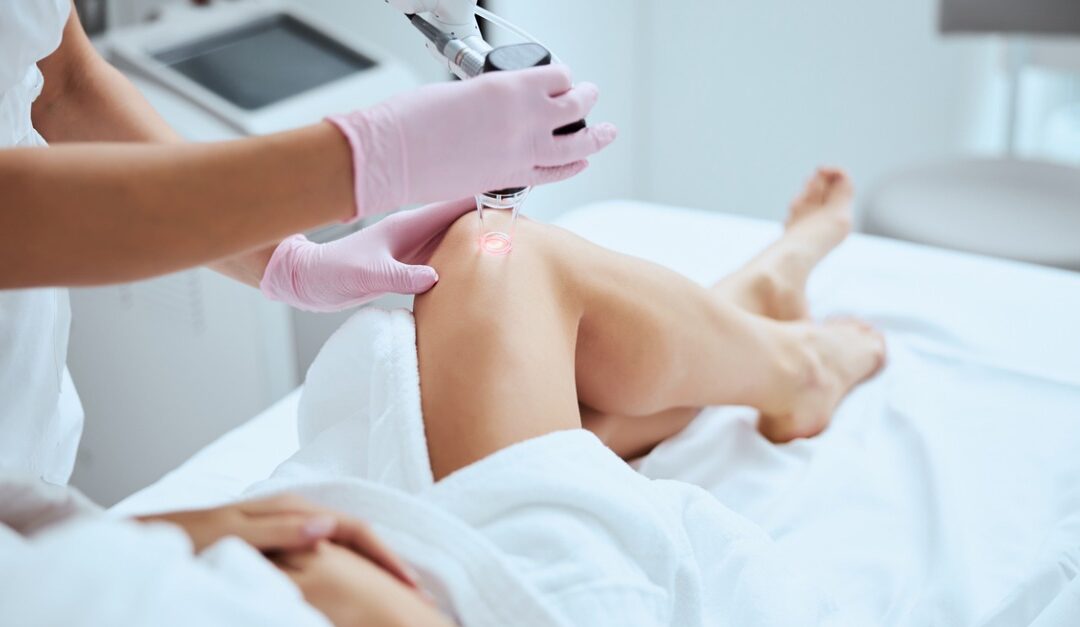Cosmetic veins can occur in many places, most often on the legs and areas of the face. Though medically harmless in most cases, some patients become self-conscious about their appearance as a result.
The good news is that wherever you’re experiencing cosmetic vein issues, they can usually be removed.
Types of Cosmetic Veins
Varicose and spider veins are the two main types of visible leg veins that can cause discomfort and embarrassment. Both are considered damaged veins, but they’re not always harmful. In some cases, having varicose veins could increase your risk of developing blood clots or other complications, but often they are largely cosmetic issues.
Both vein issues are most likely to develop in the lower limbs, because the veins there have to work the hardest against gravity and transport the blood the greatest distance to get to the heart.
“Several different factors can play a role in the development of varicose and spider veins,” asserts Dr. Lagergren, “including genetics, long periods of standing or sitting, obesity, and hormone changes.”
Visible veins in the nose, chin, and cheeks are another type of cosmetic vein issue some wish to have repaired. Excessive sun exposure or alcohol consumption, rosacea, pregnancy and injury are a few factors that may contribute to their appearance, but like varicose and spider veins, genetics and other factors can also play a role.
How Are Cosmetic Veins Treated?
Vein issues should always be treated if they’re causing pain while walking or standing, hemorrhaging, or forming blood clots or ulcers. But pursuing treatment for cosmetic reasons could also still enhance your quality of life by making you feel more confident.
In some cases, lifestyle changes may help to control the appearance of mild spider or varicose veins.
For example, you could try wearing compression stockings, losing weight if needed, avoiding long periods of sitting or standing, and exercising regularly.
Some studies have also shown that the topical application of apple cider vinegar can decrease symptoms for those looking for an easy home treatment.
For veins that persist despite lifestyle changes or are more severe in appearance, there are several other treatment options available.
- Sclerotherapy: In this noninvasive treatment, a thin needle injects a solution into the veins to slowly reduce their appearance over a period of several weeks.
- Cosmetic Laser: If you have small spider veins that are too narrow to be injected with a needle, this therapy can still reduce their appearance by directing a laser light at the vein. This can destroy the vein, causing it to disappear, without affecting your skin, and is particularly useful for facial veins.
- Endovenous Laser Therapy: In this ultrasound-guided procedure, laser energy is targeted to the affected vein to close it. The process is minimally invasive and takes 20 to 30 minutes.
- Radiofrequency Closure: This treatment is similar to endovenous laser therapy, but it uses radiofrequency energy delivered via catheter to seal the vein. It, too, takes 20 to 30 minutes and is minimally invasive.
Rarely, surgery may be needed to remove problem veins. In this treatment, small incisions are made to remove the affected veins.
Whether your varicose or spider veins are a physical or cosmetic issue (or both), we can eliminate them. Talk to one of our specialists about the best option for addressing your cosmetic vein issues. Learn more about our locations and services online, or schedule an appointment by calling (770) 423-0595.





